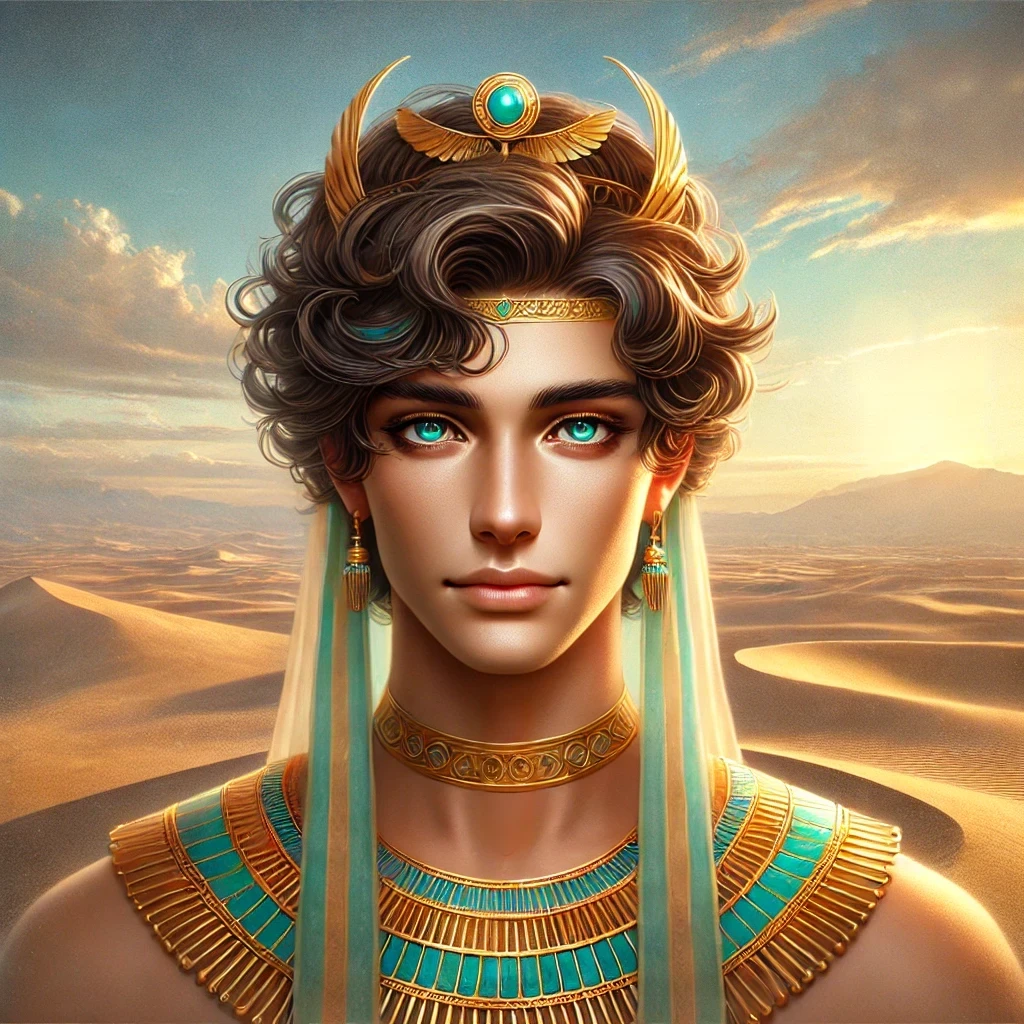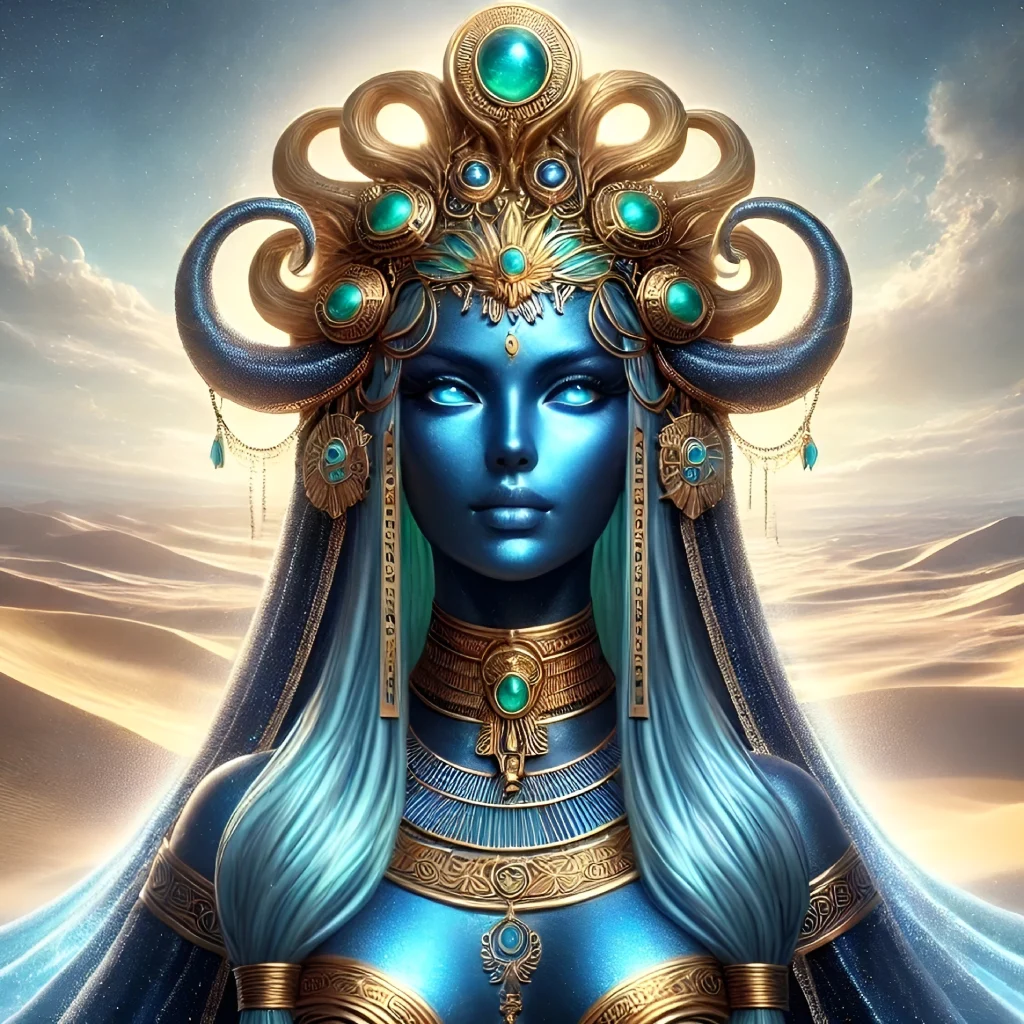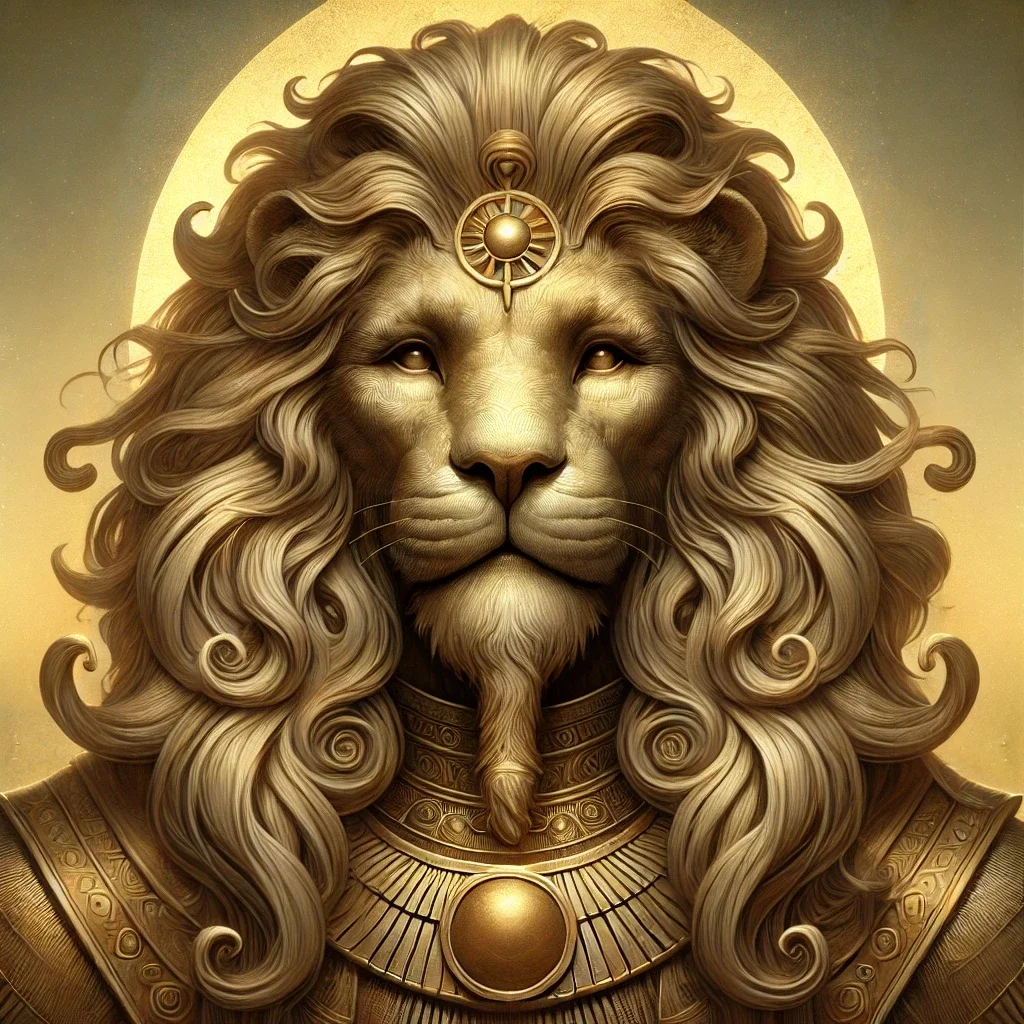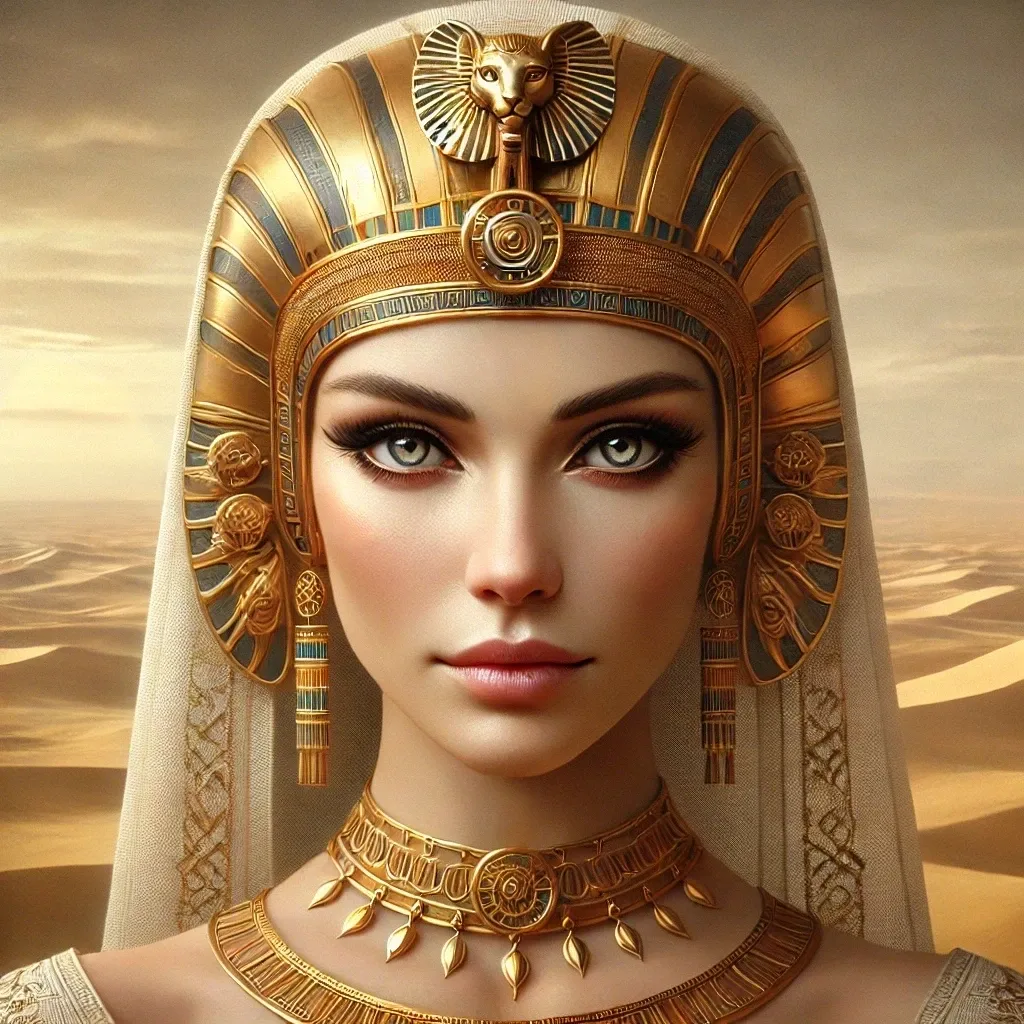Nefertem, also spelled Nefertum or Nefer-temu, was revered as the god of perfumes, beauty, and the rising sun. Known as “He Who Closes” or “The Beautiful One Who Comes Forth,” his name derives from the Egyptian words “nefer” (beautiful) and “tem” (to complete or to close). This youthful god, often depicted with a lotus flower on his head, symbolized rejuvenation and the fragrant renewal of life.
Origins
Nefertem’s origins are deeply rooted in the early cosmological beliefs of ancient Egypt. Emerging as a solar deity, he was intrinsically linked to the primeval lotus flower, a symbol of creation and rebirth.
Connection to the Lotus Flower
According to Egyptian mythology, the blue lotus flower was the first to emerge from the primordial waters of Nun. From its unfolding petals arose the sun, bringing light and order to the chaotic void. As the youthful form of the sun god, the deity embodied the essence of this lotus—a beacon of light and life.
Role in the Memphite Triad
In Memphis, Nefertem was revered as part of the divine triad alongside Ptah, the creator god, and Sekhmet, the fierce goddess of war and healing. He was considered their son, bridging the creative and destructive forces of the universe with renewal and beauty.
Appearance
The visual depictions of this god varied, but they consistently emphasized his connection to the lotus and his divine heritage.
Common Iconography
Typically, Nefertem is depicted as a young man adorned with a lotus headdress, often complemented by plumes and uraei (sacred cobras). This headdress symbolizes his association with purity, creation, and the rising sun.
Animal Representations
In some depictions, he takes on the form of a lion or a lion-headed man, linking him to his mother, Sekhmet, and emphasizing his role as a protector.
Abilities
Nefertem’s powers spanned both the physical and spiritual realms, embodying the themes of healing, renewal, and protection.
Healing Properties
As the god of perfume, he was believed to possess the ability to heal and rejuvenate through the aromatic properties of oils and incense. Temples often used sacred fragrances in rituals to invoke his blessings.
Protector of Ra
Mythology credits Nefertem with safeguarding the sun god Ra on his nightly journey through the underworld. His role as a defender of light against chaos underscores his importance in maintaining cosmic balance.
Myths
Several myths highlight the divine deeds and symbolic significance of this youthful deity.
The Lotus of Creation
One of the most well-known tales involves the primordial lotus flower. Emerging from the chaotic waters of Nun, this flower opened to reveal Nefertem, a radiant symbol of the sun’s birth and the dawn of life.
Role in Restoring Harmony
In another myth, Nefertem offers the blue lotus to soothe the anger of his mother, Sekhmet, preventing her destructive wrath from overwhelming the world. This act of mediation showcases his role as a harmonizer.
Symbolism
The deity’s rich symbolism permeates various aspects of Egyptian religion and culture.
Themes of Renewal
The lotus, central to his identity, closes at night and reopens with the sunrise, embodying the cycle of death and rebirth. Nefertem’s connection to this flower reinforced his association with rejuvenation.
Fragrance and Divinity
Perfume, considered a luxury and a spiritual tool, was tied to this god. Aromatic rituals dedicated to him were believed to purify the soul and elevate it closer to the divine.
Associated Objects, Animals, Plants, or Minerals
- Objects: The blue lotus, incense burners, and sacred oils.
- Animals: Lions and cobras, reflecting strength and protection.
- Plants: The blue lotus flower, symbolizing purity and enlightenment.
- Minerals: Lapis lazuli, often linked to the divine due to its deep blue color.
Relationships
Nefertem’s familial and divine connections played a significant role in his mythology and worship.
Son of Ptah and Sekhmet
As the offspring of Ptah and Sekhmet, he balanced their creative and destructive energies. His role as their child emphasized his position as a unifying force within the Memphite Triad.
Ally to Ra
His role as a guardian of the solar barque positioned him as a steadfast ally to Ra, the chief deity of the Egyptian pantheon. Through this relationship, he ensured the daily renewal of life and order.
Trivia
- Symbol of Youth: Nefertem’s youthful appearance represents the promise of a new day and the vigor of life.
- Rare Cult Center: While primarily worshiped in Memphis, he had few dedicated temples, indicating that his veneration was often integrated with that of Ptah and Sekhmet.
- Healing Incense: Ancient Egyptians believed that the scent of the blue lotus could heal both physical ailments and spiritual malaise.
- Modern Recognition: The blue lotus, tied to his image, remains a symbol of enlightenment and serenity in modern art and spirituality.
- Linked to Hathor: Some texts associate him with Hathor due to their shared connection to beauty and pleasure.



